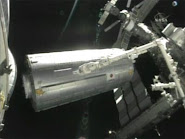Dr. Henry Frankenstein (Colin Clive), an ardent young scientist, and his assistant Fritz (Dwight Frye), a devoted hunch-back, piece together a human body, the parts of which have been secretly collected from various sources. Frankenstein's consuming desire is to create human life through various electrical devices which he has perfected.
Elizabeth (Mae Clarke), his fiancée, is worried to distraction over his peculiar actions. She cannot understand why he secludes himself in an abandoned watch tower, which he has equipped as a laboratory, and refuses to see anyone. She and her friend, Victor Moritz (John Boles), go to Dr. Waldman (Edward Van Sloan), his old medical professor, and ask Dr. Waldman's help in reclaiming the young scientist from his absorbing experiments. Elizabeth, intent on rescuing Frankenstein, arrives just as the eager young medico is making his final tests. They all watch Frankenstein and the hunchback as they raise the dead creature on an operating table, high into the room, toward an opening at the top of the laboratory. Then a terrific crash of thunder—the crackling of Frankenstein's electric machines—and the hand of Frankenstein's monster begins to move.
The manufactured monster a strangely hideous, startling, grotesque, gruesome, inhuman form, about seven feet (213 cm) tall with broad shoulders, enormous long arms, a placid, gaunt, elongated face, a square-shaped head with boxy forehead, hooded eyelids over deep-set sunken eyes, neck-spikes or bolts to serve as electrical connectors on his neck, jagged surgical scars, and a matted wig, wearing a dark suit, shortened coat sleeves and thick, heavy boots, causing him to walk with an awkward, stiff-legged, crude gait, is held in a dungeon in the watch tower. Through Fritz's error, a criminal brain was secured for Frankenstein's experiments which supposedly result in the monster knowing only hate, horror and murder. However, when we are first introduced to the 'Monster' it seems that it is not, in fact, a malevolent beast, but a simple, innocent (if scary looking) creation. Frankenstein welcomes it into his laboratory, and asks his creation to sit, which he does. Fritz, however, enters with a flaming torch which frightens the monster. It's fright is mistaken by Frankenstein and Dr. Waldman as an attempt to attack them, and so it is taken to the cellars where they chain up the monster, thinking that it is not fit for society, and will wreak havoc at any chance. They leave the monster locked up, when there is an unearthly, terrifying shriek from the dungeon. Frankenstein and Dr. Waldman rush in to find the monster has strangled Fritz. The monster makes a lunge at the two, but they escape. As the monster breaks through the door, Dr. Waldman injects a powerful drug into the monster's back and he sinks to the floor.
Dr. Waldman tries to destroy the unconscious creature which, however, awakens and strangles him. It escapes from the tower and wanders through the landscape. It then has a short encounter with a little farmer's daughter, Maria, who asks him to play a game with her where they would throw flowers into the lake so they appeared like little boats. As the monster takes much pleasure in the game and his playmate, it picks up the little girl and throws her into the lake in a playful sort of way and as he becomes aware of the consequences of his careless doing tries to get a hold of her, unsuccessfully. (The part of the sequence where the monster throws the girl into the pond was censored at the time of the film's original release, but has been restored in modern prints.) The creature then walks off troubled.
With preparations for the wedding completed, Frankenstein is once again himself and serenely happy with Elizabeth. They are to marry as soon as Dr. Waldman arrives. Victor rushes in, saying that the Doctor has been found strangled in his operating room. Frankenstein suspects the monster. A chilling scream convinces him that the fiend is in the house. The monster has gained access to Elizabeth's room. When the searchers arrive, they find her unconscious on the bed. The monster has escaped. He is only intent upon destroying Frankenstein.
Leading an enraged band of peasants, Frankenstein searches the surrounding country for the monster. He becomes separated from the band and is discovered by the monster, who springs at his prey and carries him off to the old mill. The peasants hear his cries and follow. Finally reaching the mill, they find the monster has climbed to the very top, dragging Frankenstein with him. In a burst of rage, he hurls the young scientist to the ground. His fall, broken by the vanes of the windmill, saves him from instant death. Some of the villagers hurry him to his home while the others remain to burn the mill and destroy the entrapped monster.
Later, back at Frankenstein Castle, Frankenstein's father, Baron Frankenstein celebrates the wedding of his recovered son with a toast to a future grandchild.
Perang Salib Abad 21
14 years ago

